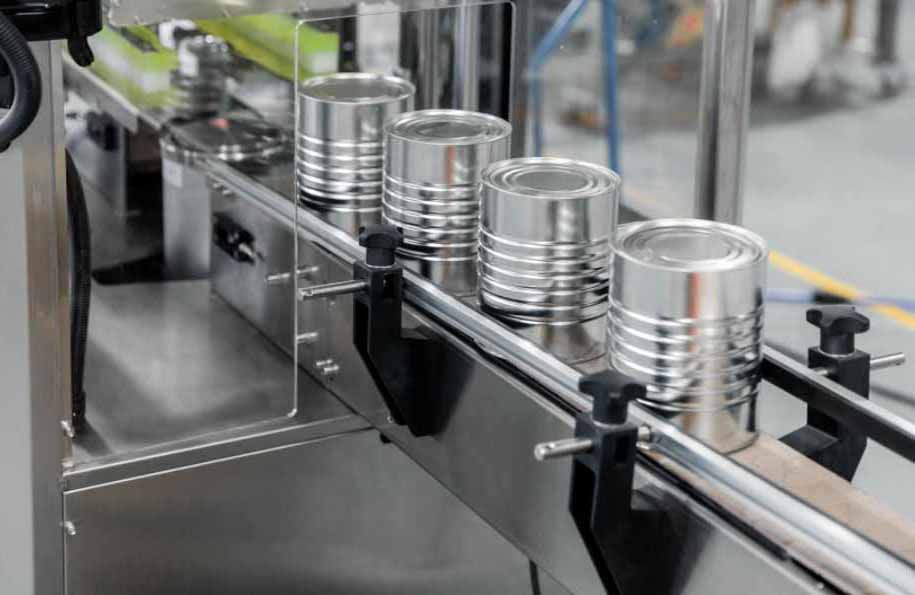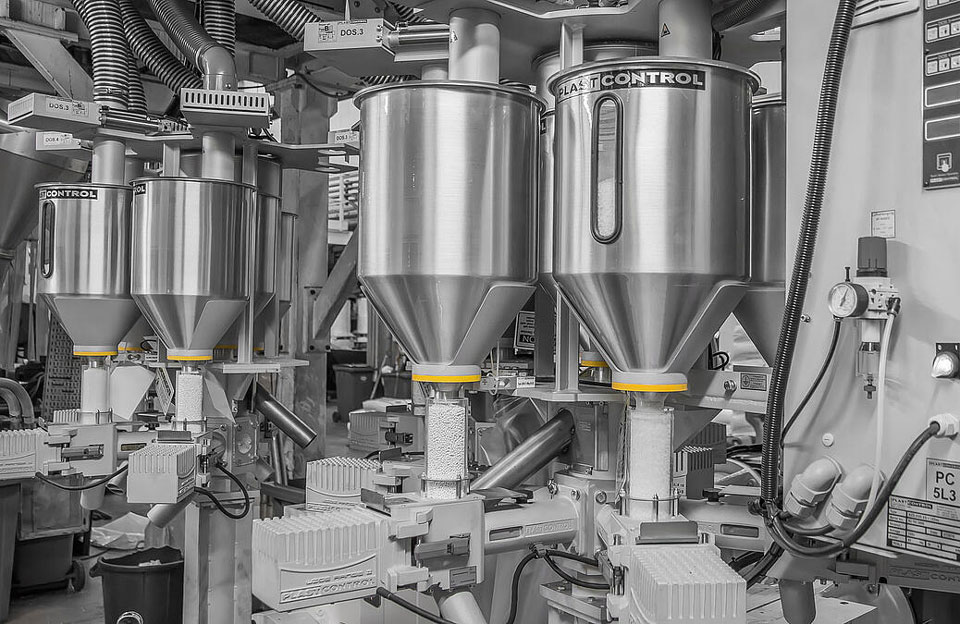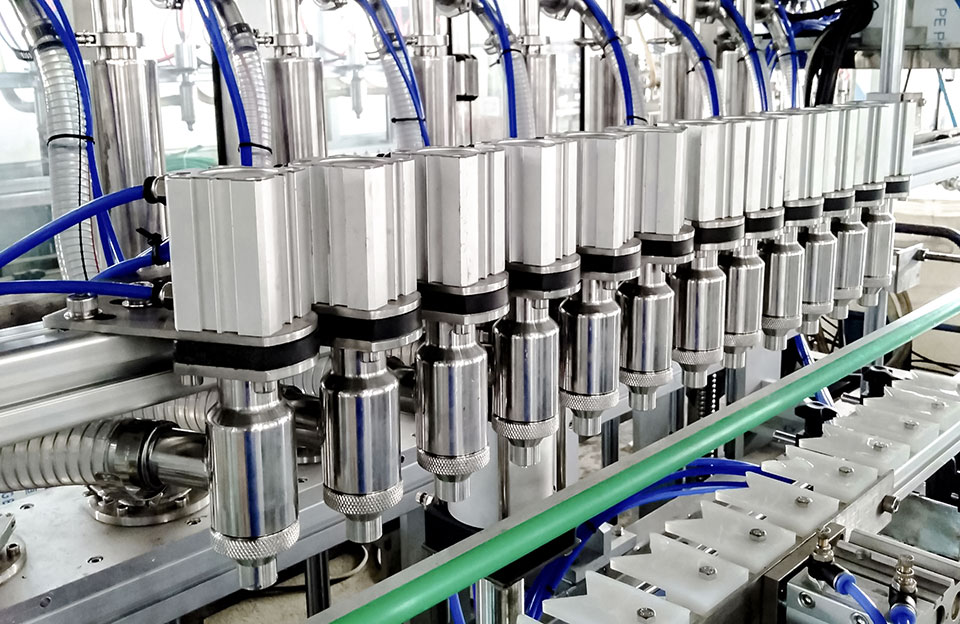The Particularity of Milk Powder Filling
Due to the unique nature of milk powder, the requirements for its filling are relatively high. The selection skills of milk powder filling production are particularly important. The following are some features of milk powder filling:
- Hygiene and Contamination Control: Milk powder is a sensitive product that can easily become contaminated if proper hygiene measures are not taken. Therefore, milk powder filling needs to abide strictly by hygienic standards. Milk powder filling equipment should be designed to be easy to clean and sanitize, such as using smooth surfaces, seamless designs, and corrosion-resistant materials.
- Moisture Control: Milk powder is highly hygroscopic and can easily absorb moisture from the surrounding environment, leading to caking and product deterioration. During filling, air humidity is minimized by maintaining a controlled environment and using techniques such as dry air or nitrogen purges to reduce moisture levels.
- Precision: Milk powder filling requires high accuracy and precision to ensure the consistency and accuracy of each container filling. Measurement deviations can affect the nutritional value and reconstitution properties of milk powder. Therefore, a filling machine for milk powder should have a reliable weighing or volume measurement system to provide accurate and consistent filling quantities.
- Product Settling and Aeration: Milk powder is a fine, light powder that settles and compacts during storage or transportation. Before filling, milk powder may need to be gently stirred or loosened to maintain its fluidity. On the other hand, excessive aeration during filling can lead to inconsistent fill volumes and packaging problems. Fillers, therefore, need to strike a balance between minimizing product settling and preventing over-aeration.
- Dust Control: Milk powder will produce dust particles during the filling process, which harms operators and may pollute the environment. Dust control measures, such as dust collection systems or closed filling equipment, should be properly implemented to ensure a safe working environment and prevent cross-contamination.
- Packaging Considerations:One of the selection skills of milk powder filling line is to consider that the filling machine should be compatible with the selected packaging format to ensure efficient and accurate filling. The type of packaging used for powdered milk (e.g. cans, sachets or sachets) affects the filling process. Different packaging formats may require specific filling mechanisms, sealing methods and labeling configurations.
Milk Powder Filling Production Line Composition:
A milk powder filling line consists of several key components and stages that work together to package milk powder efficiently and accurately.By understanding the components of the milk powder filling line, companies can also learn the selection skills of milk powder filling line.
- Bulk Material Handling: This phase involves handling and storing bulk raw milk powder. Bulk storage silos or containers store powdered milk until packaging is required.
- Powder Conveying: Milk powder is conveyed from the bulk area to the filling line through a series of conveyors or pneumatic systems, which can ensure a smooth and controlled flow of powder to the filling machine.
- Filling Machine: The filling machine is the core component of the production line, responsible for the accurate packaging and packaging of milk powder. Filling machines include different types such as auger fillers, volume fillers or combination scales. The machines are equipped with hoppers or containers with precise quantities of milk powder to be packed into individual packaging units.
- Packaging Unit: Milk powder is packed into various packaging units such as cans, jars, sachets, or bags. The packaging units are continuously fed into the production line, and the filling machine dispenses the right amount of milk powder into each unit.
- Sealing and Closing: The next step is to seal and close after the milk powder is loaded into the packaging unit. Depending on the type of packaging used, it can be done by heat sealing, induction sealing or zipper sealing.
- Date Coding and Labeling: After sealing, the packaging unit is date coded to provide important information such as production date, expiration date, and batch number. Additionally, labeling machines can apply product labels, nutritional information, branding, and other required details.
- Inspection and Quality Control: Throughout the production line, inspection systems can be implemented to ensure the quality and integrity of the packaging, including vision systems to detect defects, check weighers to verify the weight of each filled unit, inspection Metal detectors for any contamination and x-ray machines to check for foreign objects.
- Secondary Packaging and Palletizing: Once individual packaging units are filled, sealed, and inspected, they may be collected and grouped in larger secondary packaging, such as cartons or boxes. An automated system can then arrange these secondary packages on pallets for storage or shipping.
Selection Skills of Milk Powder Filling Production Line
The design criteria for a milk powder canning line may vary depending on factors such as industry regulations, specific customer requirements and the level of automation required.The selection skills of milk powder filling line should also be considered according to the characteristics of its own products.
- Food Safety Standards: The production line should comply with food safety standards and regulations. Follow good manufacturing practices and appropriate sanitation protocols to ensure the safety and quality of milk powder, such as those set by the U.S. Food and Drug Administration (FDA) or equivalent regulatory agencies in other countries.
- Equipment Design and Materials:One of the selection skills of milk powder filling line is to consider food safety and hygiene issues. The equipment used in the production line shall be made of food-grade materials and specially designed for food processing. Food-grade 304 stainless steel is commonly used because it is hygienic, corrosion-resistant, and easy to clean.
- Clean and Hygienic: The production line’s design should be easy to clean and hygienic to prevent cross-contamination. Equipment should have smooth surfaces or avoid hard-to-reach areas, which can be combined with CIP (clean-in-place) systems for automatic equipment cleaning to avoid the accumulation of milk powder or contaminants.
- Accurate Filling and Weighing: The milk powder production line filling machine should accurately dispense the required amount of milk powder into each can. At the same time, an accurate weighing system can be integrated to verify the weight of the filling, ensuring that the filling volume meets the weight specification and the consistency of each filling.
- Automation and Control Systems: Automation can improve the efficiency and accuracy of production lines. A PLC (Programmable Logic Controller) system can be used to control and monitor the entire filling line process, ensuring synchronization of operations and collecting data for process optimization and quality control.
- Product Integrity: Production line design should use appropriate sealing mechanisms and packaging materials to minimize the exposure of milk powder to external factors that may affect its quality, such as moisture, light, and oxygen. To prevent moisture absorption of milk powder and maintain its freshness and shelf life.
- Quality Control and Inspection: The production line should incorporate quality control and inspection systems at various stages, including vision systems to detect defects, metal detectors to identify contamination, and sensors to ensure cans are properly closed.
- Scalability and Flexibility: The line design should be scalable to accommodate different production capacities and flexible to handle different tank sizes and formats. As production needs evolve, the modular design can accommodate future production expansion.
Conclusion:
Due to the particularity of milk powder filling, many factors should be considered in the selection skills of milk powder filling line, such as filling accuracy, compliance with hygienic standards and other factors. At the same time, a fully automatic milk powder production line must be efficient and coordinated to ensure accurate packaging of milk powder.


